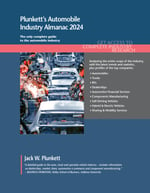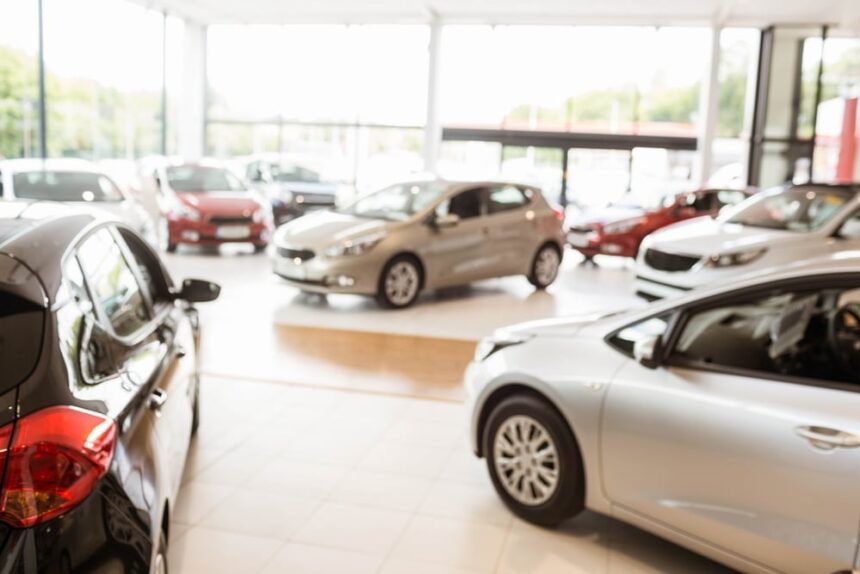 The automobile industry is surging ahead, with particularly sharp growth in the U.S. and China, including China’s emergence as the leading manufacturer of new cars for the export market (outpacing Japan for the first time). The global new automobile market was about 886 million units for 2023.
The automobile industry is surging ahead, with particularly sharp growth in the U.S. and China, including China’s emergence as the leading manufacturer of new cars for the export market (outpacing Japan for the first time). The global new automobile market was about 886 million units for 2023.
In the U.S., new car and light truck sales totaled about 15 million units for 2023, up about 12% from the previous year. However, these sales levels are down considerably from the 17+ million yearly cars and light trucks in recent pre-Coronavirus years.
Automotive Industry Data: Top Countries
China has clearly become the world’s largest car market. For 2022, the China Association of Automobile Manufacturers (CAAM) reported 26.86 million new vehicles sold. However, China’s sales are subject to change due to such factors as economic growth, the availability of credit and the regulatory environment. China’s government has a great deal of control over the market, as, at any time, it may increase sales by encouraging new auto loans, or decrease sales by adding new registration fees or restricting traffic in major cities in order to reduce congestion and pollution.
The rising affluence of consumers in China has been creating both huge opportunities and major problems. China has become the world’s largest user of energy overall and one of the world’s largest importers of petroleum products, partly to fuel its burgeoning fleet of cars and trucks. Streets and highways are clogged with vehicles, to the extent that traffic and smog are nightmarish. Automakers from abroad have raced to establish plants and partnerships in China.
Inexpensive cars manufactured in China are now on the market in many emerging nations. The question is not whether China will export cars and trucks, but whether consumers in advanced markets such as America will be convinced that they offer safety and reliability.
India has also seen significant growth in its automotive manufacturing in recent years, including exports. India-based Tata now owns the prestigious Jaguar and Land Rover brands.
One of the biggest winners by far in today’s highly competitive automobile market has been Korea, where Hyundai, along with its brand Kia, have enjoyed soaring global sales. Consumers are attracted to their reasonable prices, excellent warranties and world class quality. The firm has worked its way into luxury vehicles at the top end of its lineup.
There were roughly 286 million cars and light trucks in operation in the United States, as of 2023. Around the world, there are about 1.4 billion cars and light trucks on the road.
Recent Automotive Market Trends and the Rise of EVs
Most major car makers are aggressively pushing their crossover vehicles, which are an excellent compromise in design between sedans and SUVs. They offer large passenger and cargo compartments, good visibility and reasonably good gas mileage. Crossovers are essentially replacing sedans and some vans as the new family car. Ford, for example, has phased out nearly all of its sedans in its U.S. market so that it can concentrate to a large extent on electric vehicles and its highly popular crossovers and pickup trucks. In sedans, Ford will offer only the upscale Lincoln sedans.
Engineers are pushing technological changes in their larger cars and light trucks in order to enhance their fuel efficiency. An excellent example is the launch of the Ford F150 full-size pickup truck that relies on the use of aluminum body panels and advanced engine/transmission combinations to dramatically reduce weight and improve mileage. This truck has been selling in very large numbers in the U.S., as have the Chevy Silverado and Chrysler Ram full-size pickups. Automakers are now offering electric versions of their pickups, including a popular electric Ford F-150. Considering the popularity of such trucks, it isn’t surprising that even Tesla has announced its intention to launch an electric pickup. Ford hopes to have 40% to 50% of its global vehicle volume to be all-electric by 2030.
Mercedes-Benz announced plans to go all electric by 2030, investing more than $47 billion in this strategy over the mid-term. Volkswagen is investing in standardizing electric components such as batteries and software across its brands, including Audi and Porsche. It is investing $40 billion in this endeavor.
For future sales growth in electric vehicles, government incentives plus better batteries with longer driving ranges will be a big boost. The automobile industry is looking forward to the eventual development of advanced, long-range batteries at much lower cost. Technologies and costs are both improving dramatically. Many of the world’s top research organizations are working steadily on this challenge.
Nonetheless, the electric vehicle (EV) market faced very significant challenges as of 2023-2024. EV sales represent a modest market share in most nations. Charging station networks are not well developed, and many potential buyers are concerned they will not be able to recharge when needed, particularly on long trips. Batteries remain costly. EV sales are so small compared to the expenses involved in manufacturing EVs that some manufacturers, including Ford and Rivian, are estimated to have been losing from $20,000 to $30,000 on each EV sold. Tesla is faring better, with its substantial sales base, but its ability to earn a profit has largely hinged on the fees it earns by selling by selling “carbon offset credits” (nearly $2 billion in some years) to other car companies that do not meet emissions standards set by the State of California. Meanwhile, the world’s reliance on much of the EV supply chain coming from China, as well as controversy over the environmental challenges in mining and utilizing cobalt, nickel, manganese and other metals in batteries, pose other challenges to this sector. The bottom line is that it remains to be seen whether or not either governments’ goals or car manufacturers’ goals for EV production and market share can be met over the mid-term.
Not to be overlooked are the vast changes taking place in automobile manufacturing plants. Flexible factories have reduced man-hours and cut costs per car, while offering a much wider range of choices for customization by consumers. The wide use of robotics, advanced factory software and lean inventory methods have completely revamped the modern car factory. Today, more than ever, car manufacturers and their suppliers are cooperating in the design and manufacture of new cars in ways that are revolutionizing the entire process.
European manufacturers are facing challenges of their own. High costs, tough labor laws and daunting government regulations are constant challenges to manufacturers in Europe. Nonetheless, firms like Volkswagen and Mercedes-Benz have found great success in the global market over a period of many decades, often locating plants in nations where their products sell well, including major plants in the U.S.
Automotive Product Innovation: What’s Next
The thought of the next billion automobile owners/users is either the most intriguing or the most terrifying vision for the near future, depending on how you look at it. Future global demand for cars could possibly outstrip today’s levels, creating immense business opportunities.
However, the combination of ride sharing systems like Uber and autonomous vehicles capable of driving themselves will have very profound effects on automobile manufacturing, usage, sales and ownership patterns. At least in dense urban environments, the result is very likely to be a large proportion of individuals who opt to use shared vehicles rather than user-owned cars.
Surveys show that many young adults have little interest in owning a car of their own, which is vastly different from the attitude that was held by previous generations. Major automobile makers, when looking to the future, talk in terms of delivering “mobility services” as much as automobiles, while they consider the looming effects of car-sharing and ride-on-demand services.
Car safety has made dramatic progress in recent years, mainly by adopting technologies such as backup cameras, anti-skid, advanced brakes and collision avoidance systems. Now, all major car makers are heavily invested in technologies that will enable cars to largely drive and monitor themselves.
A major technology focus is vehicles that can communicate with each other while utilizing advanced technologies to safely stay in lanes, regulate speeds and apply emergency braking. (This is referred to as vehicle-to-vehicle communications and is part of an overall digital strategy known as ITS, or intelligent transportation systems.)
Automobiles have become high-powered computers on wheels, as many automotive systems are now controlled by chips and software. At the same time, auto makers are finding innovative ways to use the latest in wireless and smartphone technologies, including apps, to enhance the entertainment, information and communications capabilities of vehicles. Automotive “infotainment” has become a dominant theme.
Where to Learn More
 This article is an excerpt from a recent report titled Plunkett’s Automobile Industry Almanac 2024, which covers competitive intelligence, market research and business analysis—everything you need to know about the global auto industry.
This article is an excerpt from a recent report titled Plunkett’s Automobile Industry Almanac 2024, which covers competitive intelligence, market research and business analysis—everything you need to know about the global auto industry.
Use this report to quickly understand major industry trends, access key automobile industry statistics, and gain an understanding of top competitors in this space. Visit the report page using the link above to learn more.
Additional Automobile Market Research Reports
About Plunkett Research, Ltd
Plunkett Research, Ltd. is a leading publisher of business and industry research, with a global client list of top corporations, consultancies, investment firms, universities and government agencies. Our core focus is on the analysis of industry trends, industry benchmarks, technologies and opportunities. This allows us to leverage our research methodology to deliver accurate, timely information that our clients need to develop business strategies, determine market scope and consider investment opportunities.
With Permission
Copyright © 2024, Plunkett Research, Ltd., All Rights Reserved








